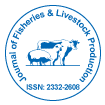Unsere Gruppe organisiert über 3000 globale Konferenzreihen Jährliche Veranstaltungen in den USA, Europa und anderen Ländern. Asien mit Unterstützung von 1000 weiteren wissenschaftlichen Gesellschaften und veröffentlicht über 700 Open Access Zeitschriften, die über 50.000 bedeutende Persönlichkeiten und renommierte Wissenschaftler als Redaktionsmitglieder enthalten.
Open-Access-Zeitschriften gewinnen mehr Leser und Zitierungen
700 Zeitschriften und 15.000.000 Leser Jede Zeitschrift erhält mehr als 25.000 Leser
Indiziert in
- Index Copernicus
- Google Scholar
- Sherpa Romeo
- Öffnen Sie das J-Tor
- Akademische Schlüssel
- Elektronische Zeitschriftenbibliothek
- RefSeek
- Verzeichnis der Indexierung von Forschungszeitschriften (DRJI)
- Hamdard-Universität
- EBSCO AZ
- OCLC – WorldCat
- Gelehrter
- SWB Online-Katalog
- Virtuelle Bibliothek für Biologie (vifabio)
- Publons
- Euro-Pub
- Universität Cardiff
Nützliche Links
Open-Access-Zeitschriften
Teile diese Seite
Abstrakt
Eucalyptus camaldulensis Extract as a Preventive to the Vibriosis in Western White Shrimp (Litopenaeus vannamei) in Bushehr Province
Ghasemian M*
Objective: In order to prevent the unusual use of antibiotics and promote green aquaculture, researchers have used various herbs as medicines proposed in the aquaculture industry. One of medicinal plants is Eucalyptus camaldulensis which has been identified in different studies for the antimicrobial activity of the extract in controlling and eliminating bacterial and fungal strains which was evaluated in this study.
Methods: In this research, a variety of soxhlet and rotary extracts of ethanol, methanol, acetone and water soluble compounds and its antibacterial effect was investigated by agar diffusion method in a well. For this purpose, Vibrio Harveyi and Vibrio azureus (Kj018724.1) were isolated and identified by the sequencing of 16SrDNA.
Results: The results showed that 2.5 μg/ml extracts of ethanol, methanol, acetone and 10 μg/ml of aqueous extract of the herb had minimum inhibitory concentration (MIC)and also 10 μg/ml of ethanol, methanol, acetone and 40 μg/ml of aqueous extract conferred minimum bacterial concentration (MBC) against V. harveyi in addition, 5 μg/ml of each methanolic and acetone, 2.5 μg/ml of ethanolic and 10 μg/ml of aqueous extracts had MIC on V. azureus and 5 μg/ml of ethanolic and 10 μg/ml of methanolic and acetone and 20 μg/ml of aqueous extracts showed MBC against V. azureus. Moreover, by examining the kinetics of V. harveyi and V. azureus, the Eucalyptus camaldulensis extract had growth inhibitory effect on the both species.
Conclusion: The effects of various environmental factors such as temperature, salinity and time on the antimicrobial activity, the extract exhibited a good performance and can be used as an environmentally proper and compatible antimicrobial agent in ecological conditions and shrimp breeding areas, especially in southern Iran.
Zeitschriften nach Themen
- Allgemeine Wissenschaft
- Biochemie
- Chemie
- Genetik und Molekularbiologie
- Geologie und Geowissenschaften
- Immunologie und Mikrobiologie
- Klinische Wissenschaften
- Krankenpflege und Gesundheitsfürsorge
- Landwirtschaft und Aquakultur
- Lebensmittel & Ernährung
- Maschinenbau
- Materialwissenschaften
- Medizinische Wissenschaften
- Pharmazeutische Wissenschaften
- Physik
- Sozial- und Politikwissenschaften
- Umweltwissenschaften
- Veterinärwissenschaften
Klinische und medizinische Fachzeitschriften
- Anästhesiologie
- Augenheilkunde
- Betrieb
- Dermatologie
- Diabetes und Endokrinologie
- Gastroenterologie
- Genetik
- Gesundheitspflege
- Immunologie
- Infektionskrankheiten
- Kardiologie
- Klinische Forschung
- Medizin
- Mikrobiologie
- Molekularbiologie
- Neurologie
- Onkologie
- Pädiatrie
- Pathologie
- Pflege
- Toxikologie
- Zahnheilkunde

 English
English  Spanish
Spanish  Chinese
Chinese  Russian
Russian  French
French  Japanese
Japanese  Portuguese
Portuguese  Hindi
Hindi